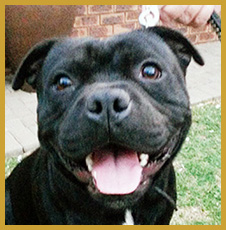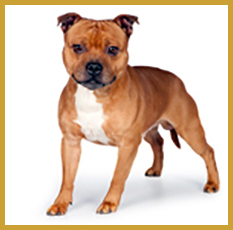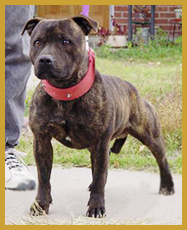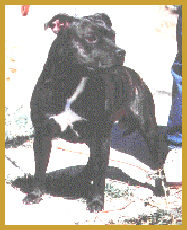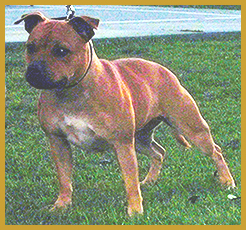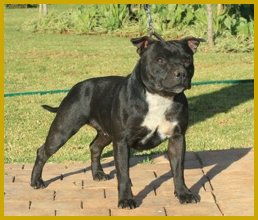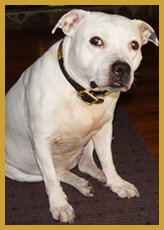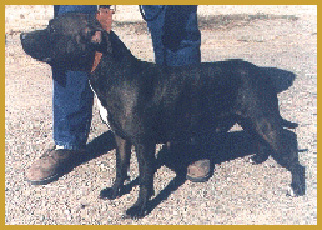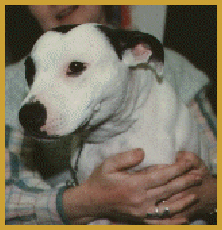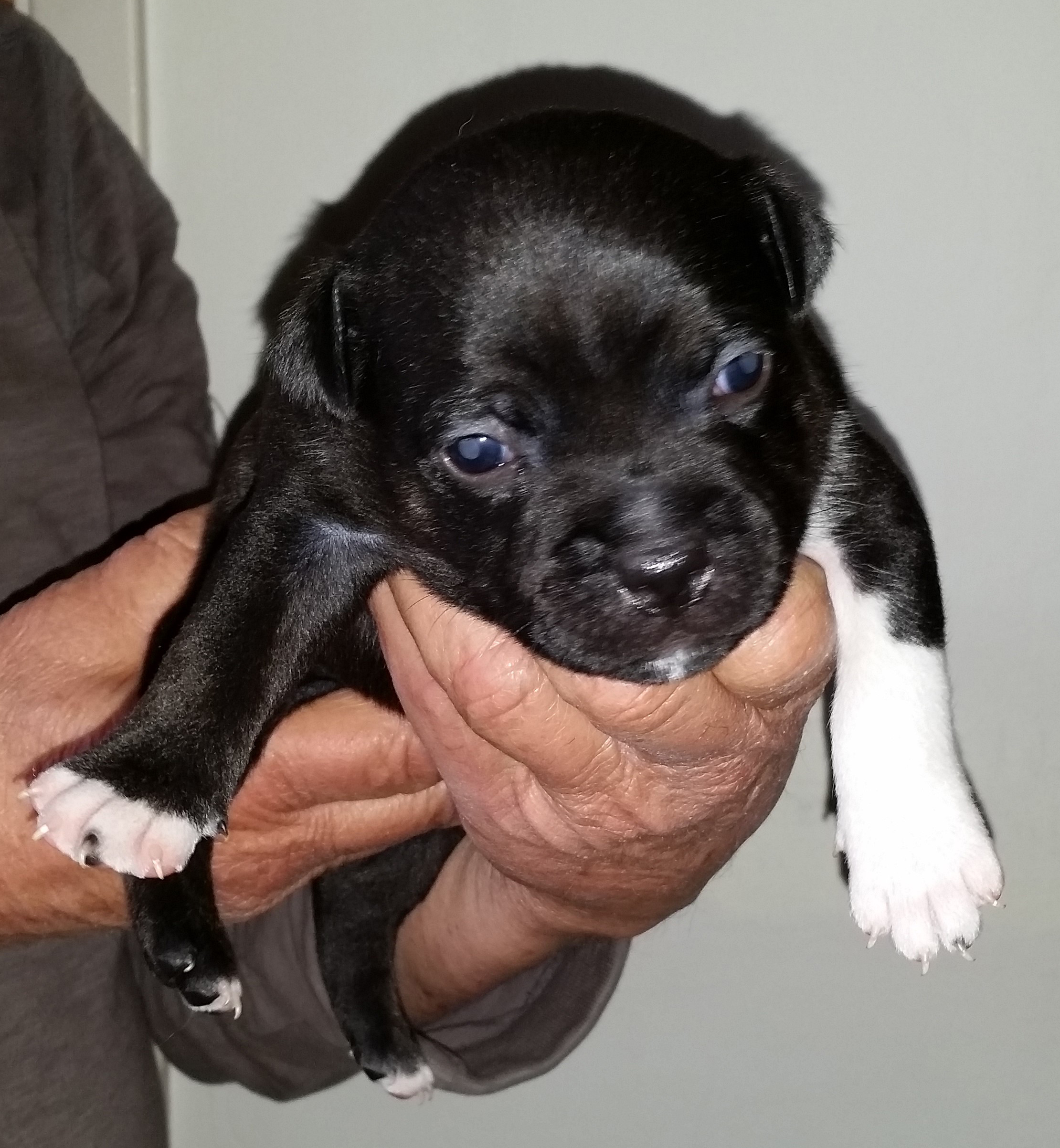Definition of Terms
In response to questions posted to the Stafford Forum email list, Juanita Hobbs wrote the following answers.
These are the definitions according to the Veterinary Ophthamologist, Dr. Anthony Goodhead, who heads up the National Eye Scheme in South Africa:
DISTICHIASIS
Sometimes the condition is referred to as a double row of eyelashes, for extra hairs arise from the edge of the eyelid to rub against the corneal surface. The effects are variable and mild irritation to corneal ulceration will be seen. Treatment is extremely difficult and invariably involves surgery to remove the hair roots permanently. Plucking out the offending hairs is useful, but requires the maximum cooperation of the patient! Of course it is followed by hair regrowth, and many surgical techniques have been invented to remove the roots. Even then success is difficult to achieve, and the dog may have to suffer this condition throughout its life. It is the most common eye defect found in the Stafford in South Africa.
ENTROPION
Primarily an inherited condition. It is due to an excess of eyelid tissue, or a small eye, or both, the result being that a varying amount of hair-covered eyelid can turn in to rub directly against the cornea or conjunctiva, or both. It is usually extremely painful, and the damage caused to the cornea can render the eye blind. Most dogs are affected by six months of age and in some the signs of the problem (excessive blinking and a wet face) may be seen within the first month of life. Occasionally the condition is self-correcting as the puppy grows, but in the vast majority of affect dogs surgery is necessary to turn the eyelid away from the surface of the eye. Usually such surgery is successful, but it is much better that, as with the other inherited eyelid defects, breeders try to avoid producing this condition in their stock.
ECTROPION
Primarily an inherited condition, in which the lower eyelid droops away from the eyeball to expose the third eyelid and the conjunctiva. Exposure of the delicate mucous membrane causes conjunctivitis. Correction is possible by complicated surgery in which the eyelid is lifted and shortened. Occasionally further surgery may be necessary to change completely the shape of the eyelids.
PROGRESSIVE RETINAL ATROPHY (PRA)
PRA is a term used to describe a number of inherited retinal degenerations involving several breeds. The group is broadly divided into two, generalized PRA and central PRA. In the former, blindness at night time (nyctalopia) is an early indication of the presence of the disease, but eventually the dog is rendered totally blind. Cataract is a common secondary feature of the disease. In central PRA night blindness is not a feature and though vision is several affected, the dog may not become totally blind. In both groups of PRA there is degeneration of the photoreceptors, but in the generalized form this degeneration is the inherited defect, whereas in central PRA rod and cone degeneration follows an inherited defect elsewhere in the retina.
HEREDITARY CATARACT (also called JUVENILE CATARACT)
An inherited condition, a cataract is an opacity of the lens or its capsule. The age of onset has been most commonly seen from 8-10 weeks of age up to about 18 months, but has been seen as late as 3 years. It is usually bilateral and symmetrical. Once the cataract becomes total the dog is completely blind. This cataract is presumed to follow an autosomal (not sex linked) recessive mode of inheritance.
PERSISTENT HYPERPLASTIC PRIMARY VITREOUS (PHPV)
This is a congenital condition (present from birth) in which there is a developmental defect in the normal regression of some of the intraocular structures of the eye. PHPV can range from being very mild to severe abnormalities which may lead to blindness. The presence of mild abnormalities are usually seen as small brown pigmented dots on the posterior lens capsule. Previously the literature indicated that this was always observed as a bilateral phenomenon but recently it has been stated that affected dogs may show unilateral involvement, although this is less common. The present knowledge of the mode of inheritance of this disease is thought to be an autosomal irregular dominant with variable expression. Due to PHPV seldom resulting in secondary cataracts in the Stafford, those that are mildly afflicted will seldom show any form of visual impairment during the course of their lives. Even those that are more severely afflicted, may be capable of adapting by using peripheral to compensate. Stafford breeders should therefore not assume that the problem is absent simply because they have not encountered blatant signs of visual impairment, instead discerning breeders should ensure that all their Staffords are tested through the National Eye Scheme.
Staffanatically yours,
Juanita Hobbs
